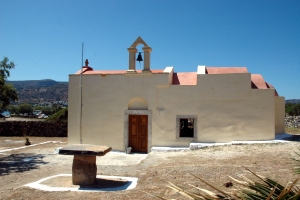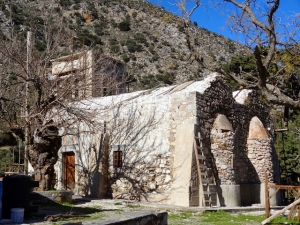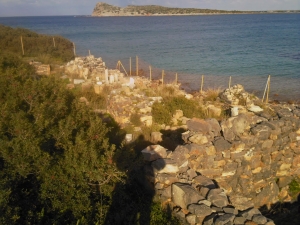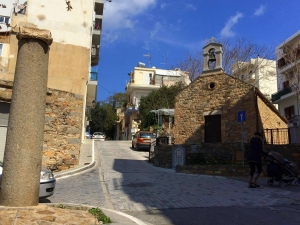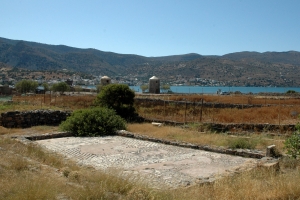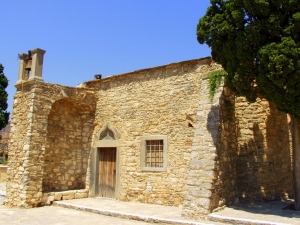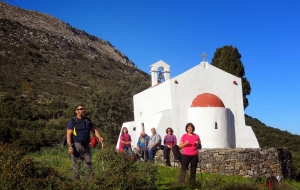The Monastery of the Ascension is located at Poros of Elounda, at the site of the ancient town of Olous, today submerged in the lagoon. On Ascension Day the locals revive a weird custom. Women from Elounda enter the sea and collect bunches of seaweed and stones, which symbolize the stability of life.
The monastery of Agios Georgios in Vrachasi is located 1km southwest of the village Vrachasi, near Neapolis. The monastery has actively participated in the revolutionary movements against the Turks, during which it suffered tremendous damages.
Very close to the beach Kolokitha we meet the ruins of an early Christian basilica (5-6th century) that came to light in 1971 by the archaeologist Manolis Borboudakis. There is also a tiny lovely beach aside. We see scattered pieces of marble capitals, the pulpit and the gates, and the mosaic floors that have been completely destroyed by the sea.
The church of the Virgin ‘Panagia Vrefotrofos’ (the protector of infants) is located in the center of the city of Agios Nikolaos, near the sea. It's construction dates back from the 12th century and it bears frescoes of the 14th century.
The monastery of Xera Xyla is located in the province of Mirabello, near the village Kourounes. The central temple is dedicated to Saint George and today is uninhabited. The complex consists of the domed church of St. George, surrounded by several fortress-like cells and a two-storey building.
The Early Christian Basilica of Olous (built around 4-5th century AD) is located at position Poros and was excavated in 1937 and 1960. This is a brilliant sample of religious architecture of its time and it is considered to have been the cathedral of the ancient town Olous, which is today submerged in the lagoon of Elounda.
The large cemeterial church of Neapolis is a double-aisled church dedicated to Christ the Savior and All Saints. The church bears frescoes of the 14th century in relatively good condition. The existence of tanks suggests that the site was used as a small monastery.
The church of St. Peter near Vrachasi was the temple of a small monastery that operated here in the 17th century, on the site of a preexisting temple of the 14th century. We can discern traces of walls and a water mill (the area had a lot of water so it is very green).











